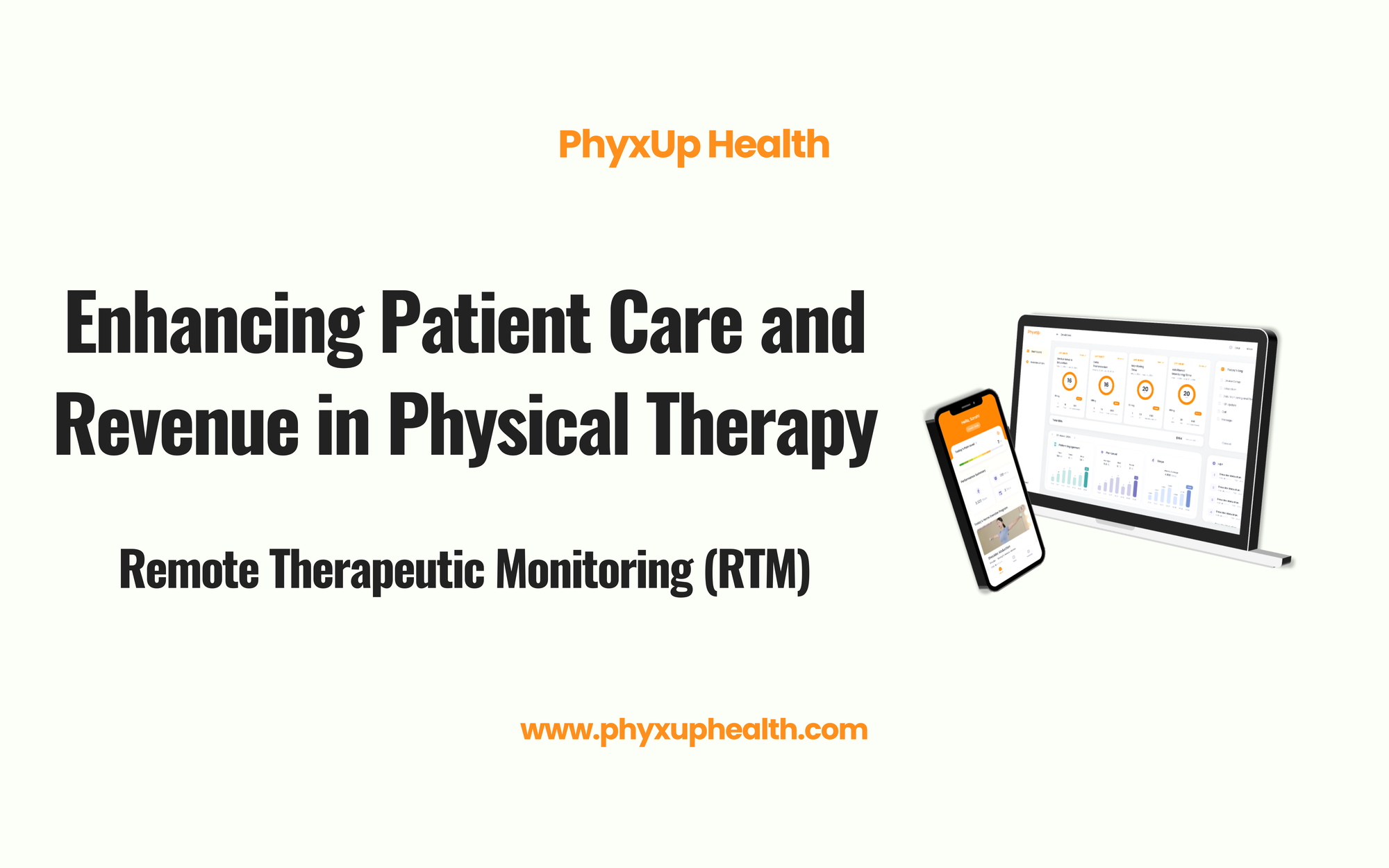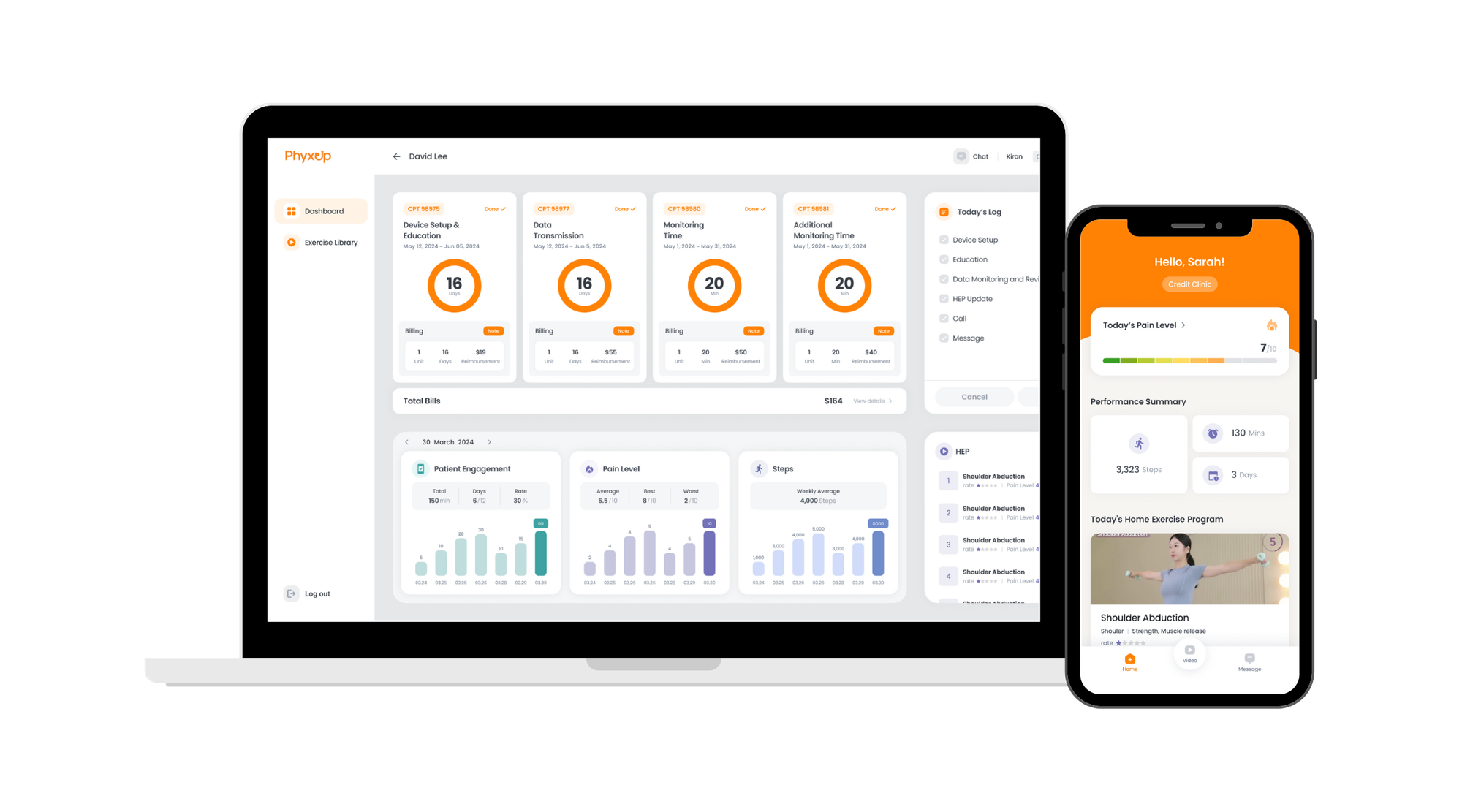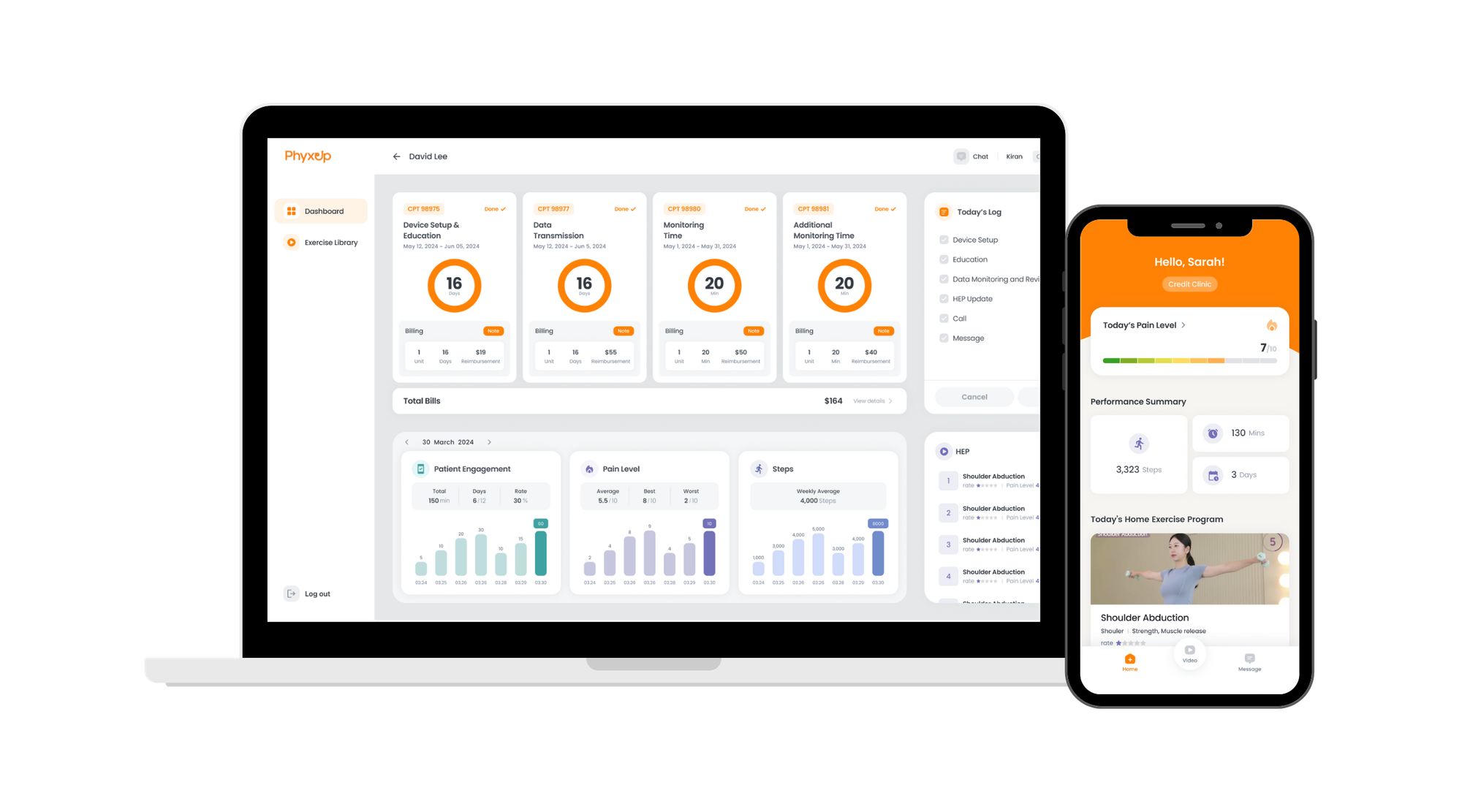Remote Therapeutic Monitoring (RTM): A New Opportunity for Patient Care and Revenue Growth in Physical Therapy

In today’s fast-paced healthcare landscape, physical therapists are constantly seeking innovative ways to optimize patient care, streamline workflows, and improve the overall efficiency of their clinics. One such solution that is quickly gaining traction and delivering significant benefits is Remote Therapeutic Monitoring (RTM). This advanced technology empowers therapists to stay connected with their patients and track their progress outside of traditional in-person consultations. But what exactly is RTM, and how can it benefit physical therapy practices?
What is Remote Therapeutic Monitoring (RTM)?
Remote Therapeutic Monitoring (RTM) is a digital health solution that enables healthcare providers, such as physical therapists, to monitor their patients’ progress remotely, focusing especially on Home Exercise Programs (HEPs). Unlike the conventional, face-to-face appointments, RTM offers a continuous stream of patient data that helps track adherence to exercise regimens, assess the effectiveness of treatments, and ensure interventions are timely and tailored to individual patient needs.
Why is RTM Important for Physical Therapy Practices?
Incorporating RTM into your physical therapy practice isn't just about improving patient care—it's also about tapping into new revenue opportunities. By leveraging the new CPT codes for RTM, physical therapists can bill for their remote monitoring services, creating additional revenue streams. This model not only optimizes patient care but also aligns with the growing demand for value-based care in the healthcare industry.
How Does RTM Work?
At its core, RTM involves the use of apps or software to monitor and track a patient’s progress with their prescribed treatments. This typically focuses on Home Exercise Programs (HEPs), where patients log important data such as exercise adherence, symptoms, pain levels, and recovery progress. This information is transmitted to the therapist, who can then review the data, offer feedback, adjust treatment plans, and ensure patients are staying on track with their rehabilitation.
Patients benefit from real-time support and feel more engaged in their treatment process, while therapists have access to valuable data that helps them fine-tune care plans. This integration of technology creates a more patient-centered approach and improves long-term outcomes.
New CPT Codes for RTM and Reimbursement Opportunities
As of January 2022, the Centers for Medicare & Medicaid Services (CMS) introduced new CPT codes for RTM that allow physical therapists and other licensed healthcare providers to be reimbursed for remote monitoring services. These CPT codes offer a crucial opportunity for physical therapy practices to expand their revenue streams while also improving patient engagement and outcomes.
Here’s an overview of the key RTM CPT codes:
- CPT 98975: Covers patient education, device setup, and initial data collection, billed once per therapy episode (~$19).
- CPT 98977: Similar to CPT 98976, but for musculoskeletal monitoring, requiring at least 16 days of patient data (~$55).
- CPT 98980: For 20 minutes of data interpretation and monitoring by clinical staff (~$50).
- CPT 98981: For an additional 20 minutes of care management and monitoring (~$40).
Who Can Bill for RTM?
RTM offers a unique opportunity for a variety of healthcare professionals to enhance patient care and generate additional revenue. The ability to bill for RTM services is not limited to physical therapists alone, but extends to a range of providers involved in the treatment of musculoskeletal conditions. To qualify for RTM billing, providers must meet the necessary requirements, including monitoring patients for at least 16 days within a 30-day billing period as per Medicare's guidelines.

The following professionals are eligible to bill for RTM services:
- Physical Therapists
- Orthopedic Surgeons
- Chiropractors
- Physician Assistants (PAs)
- Nurse Practitioners (NPs)
- Other Licensed Healthcare Providers (involved in the management of musculoskeletal conditions)
By incorporating RTM into their practice, these providers can improve patient engagement, optimize treatment plans, and open up new revenue streams through remote monitoring.
Benefits of RTM for Physical Therapists
1. Enhanced Patient Engagement
RTM creates an interactive, engaging experience for patients by offering continuous reminders, progress tracking, and real-time feedback. This increased accountability encourages patients to follow through with their prescribed Home Exercise Programs (HEPs), which improves their recovery outcomes. The result is higher patient satisfaction, increased adherence to treatment plans, and better long-term results.
2. Improved Clinical Outcomes
RTM enables therapists to monitor patient progress remotely, allowing them to identify potential issues early. By reviewing data and symptoms in real-time, therapists can make proactive adjustments to treatment plans, ultimately improving patient outcomes. This data-driven approach to care ensures more personalized, effective treatment, resulting in quicker recoveries and reduced complications.
3. Data-Driven Insights for Better Decision Making
RTM offers valuable data regarding patient adherence, symptom tracking, and overall treatment effectiveness. By leveraging this information, physical therapists can make more informed decisions and adjust their care plans to suit each patient’s specific needs. This leads to more accurate diagnoses, tailored treatments, and overall improved patient outcomes.
4. Reduced Administrative Burden
With traditional monitoring and documentation practices, physical therapists often spend a significant amount of time on administrative tasks. RTM automates many of these tasks, including collecting patient data, tracking progress, and ensuring proper documentation for billing purposes. This reduction in administrative workload allows therapists to focus more on patient care and less on paperwork.
Streamlining RTM with PhyxUp Health
Implementing RTM into your practice may seem daunting due to the complexities of insurance, billing, and documentation requirements. However, PhyxUp Health offers a comprehensive RTM platform that simplifies the entire RTM process. Our solution automates patient monitoring, billing with RTM CPT codes, and documentation, so providers can focus on delivering exceptional patient care.
PhyxUp Health makes it easy for physical therapists to implement RTM seamlessly, maximizing the benefits—from improving patient adherence to simplifying billing and accelerating reimbursement. With our platform, you can ensure accurate documentation and smooth integration into your practice, all while boosting your revenue and enhancing patient outcomes.

Conclusion: RTM as the Future of Physical Therapy
The rise of Remote Therapeutic Monitoring (RTM) is transforming the way physical therapy is practiced. By incorporating RTM into your clinic, you can improve patient engagement, achieve better clinical outcomes, and streamline your workflow. Additionally, the introduction of new CPT codes presents an exciting opportunity to generate additional revenue, making RTM an essential tool for growing and future-proofing your practice.
As healthcare continues to evolve, integrating digital health solutions like RTM will be key to staying competitive and providing superior care. At PhyxUp Health, we are dedicated to helping physical therapists take full advantage of RTM, offering a user-friendly platform that simplifies the process, boosts revenue, and enhances the overall patient experience.
